
Surf CampFuerteventura, Spain
Surfing in Fuerteventura, Canary Islands - The ultimate surf guide
Looking for a surf adventure in Europe? Then this desert island with its great surf spots and gorgeous nature might be just the place for you! Fuerteventura is located in the Atlantic Ocean just outside the coast of Morocco. The environment is quite unique with its desert landscape surrounded by beautiful beaches and crystal clear blue water. Here’s all you need to know about Fuerteventura before arriving at one of the Canary Islands.
Quick Canary Islands facts: Things to know before you go
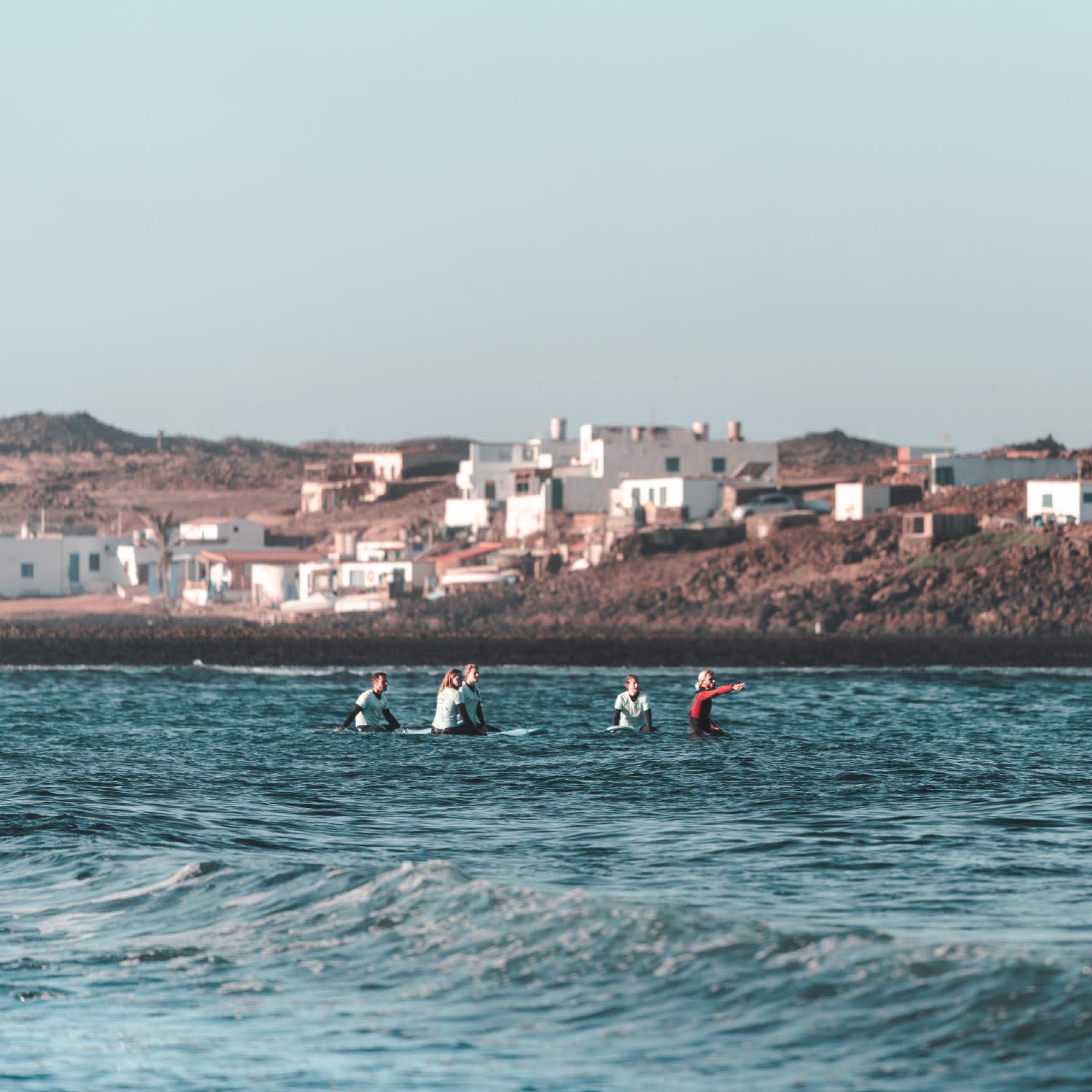
Official languages: Canarian Spanish
Time zone: GMT+1
Currency: Euro (EUR)
Capitals: Santa Cruz de Tenerife and Las Palmas de Gran Canaria
Population: Around 2.2 million people.
Religion: The main religion in the Canary Islands is the Catholic Church, just like the rest of Spain.
Electricity: The voltage in the Canary Islands is 220 V and the power plug socket is for type F plugs.
Flag: 🇮🇨
Surfing in Fuerteventura: Everything you need to know
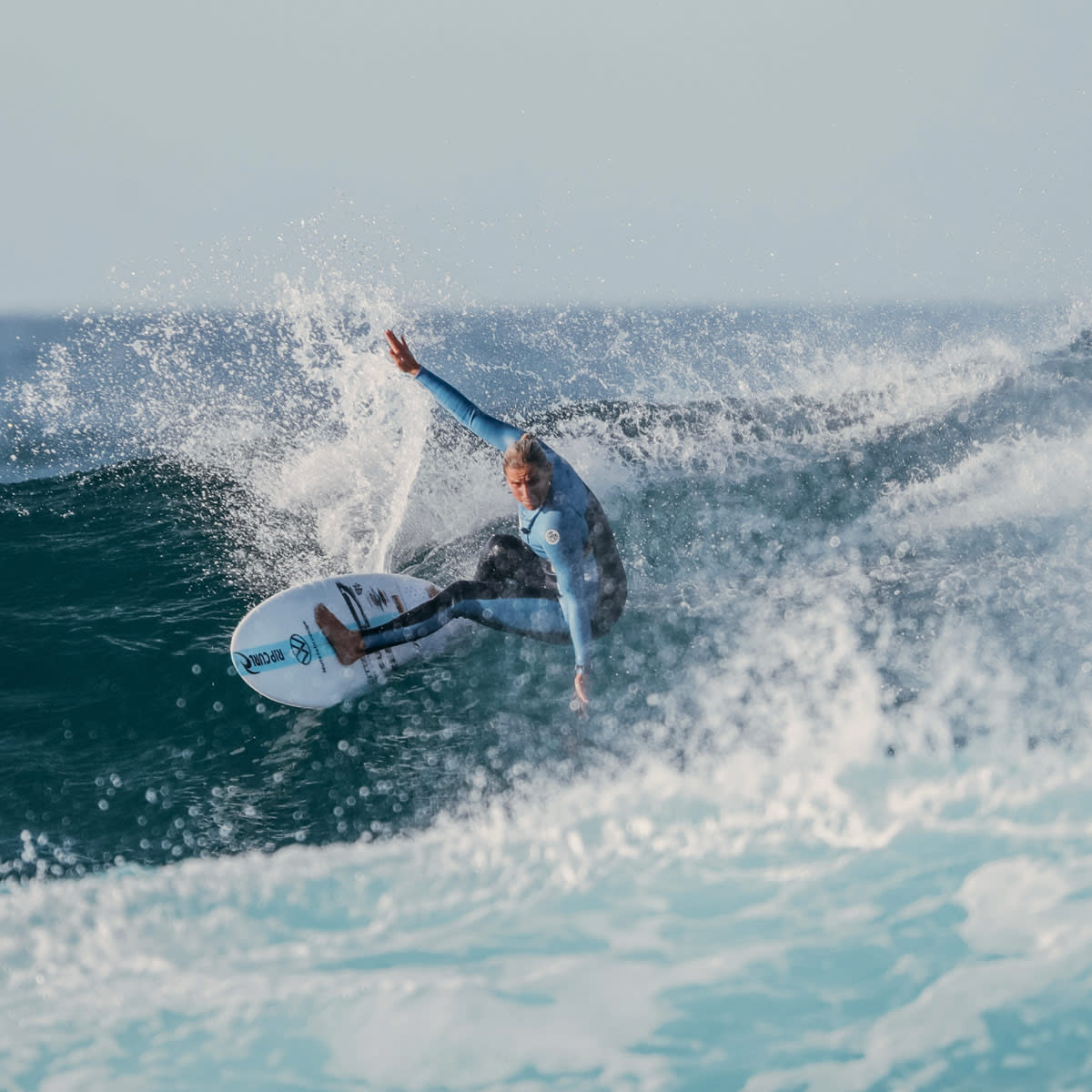
Fuerteventura's island life is calling! This island’s surf scene is buzzing with year-round waves that are as wild and fun as its jaw-dropping landscapes. Whether you’re chasing monster swells or just cruising mellow rides, Fuerteventura delivers endless stoke for surfers of all levels.
Read more about our surf courses in Fuerteventura here
Where to surf: Our hidden gems around Fuerteventura
Fuerteventura offers some great waves around the island, and we will take you to the best spots around. We mainly surf reef breaks and both lefthanders and righthanders. However, our hidden gems in Fuerteventura will stay hidden until your arrival. We believe that by keeping these spots a secret, surfers can enjoy a more authentic and intimate experience amidst the island's natural beauty.
Seasons and surf conditions: When is the best time to surf in Fuerteventura?
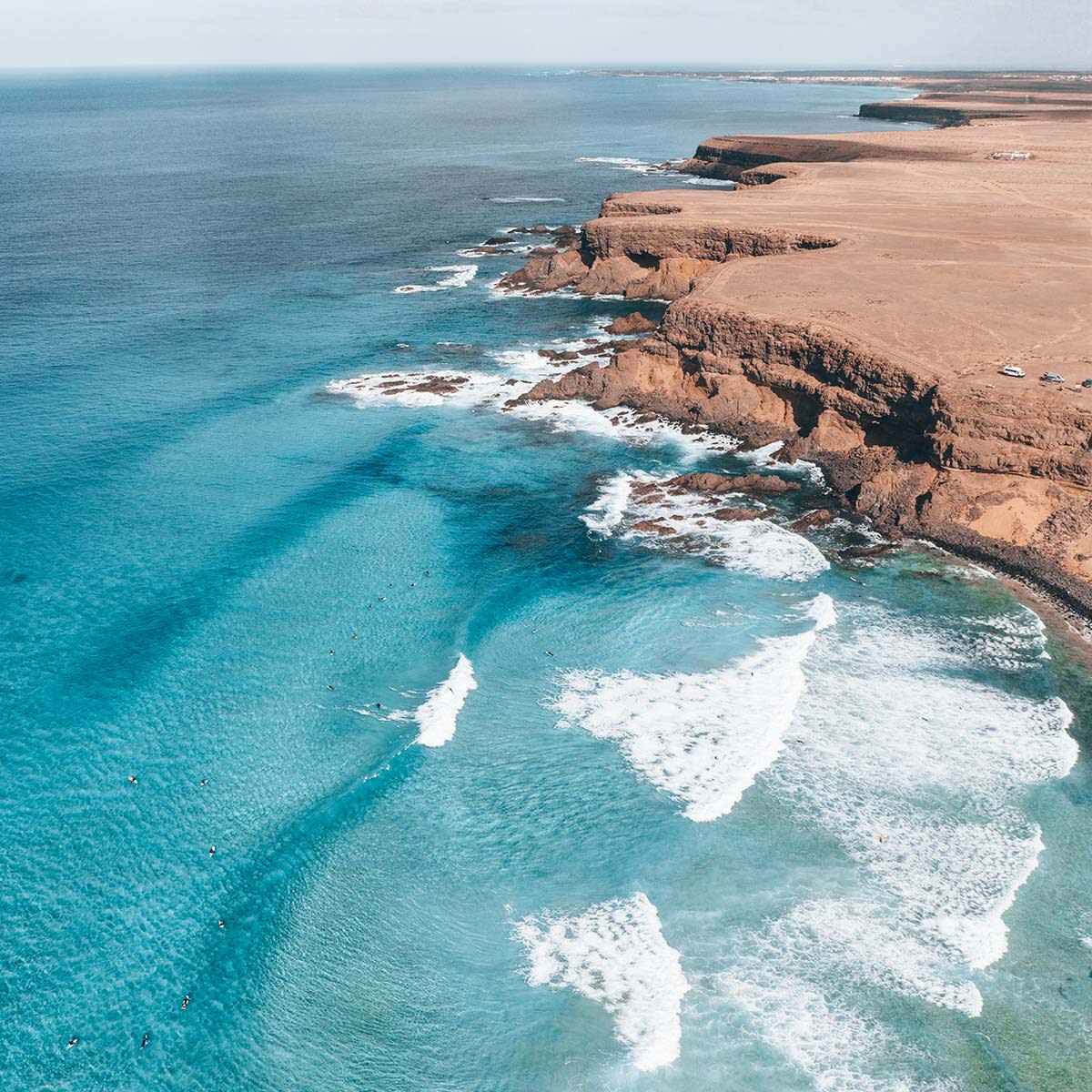
Fuerteventura offers diverse surf conditions throughout the year, making it a great destination for all surf levels. Winter brings more robust waves, ideal for advanced surfers, while summer offers more gentle swells suitable for all levels. Here’s a breakdown of what to expect each season:
Spring: March to May
Summer: June to September
Autumn: October to November
Winter: December to February
Spring surf conditions:
Spring brings pleasant weather and consistent swells, with waves suited for intermediate to advanced surfers. It’s a fantastic time to enjoy fewer crowds and catch great rides.
Summer surf conditions:
Summer is ideal for surfers of all levels, with warmer temperatures and generally more manageable waves. Beginners will find the conditions friendly, though a bit of caution is advised in the peak summer swells.
Autumn surf conditions:
Autumn continues with excellent conditions, offering a mix of swell sizes. This season is great for all levels, with waves that can challenge even more experienced surfers, especially as the swells pick up towards November. We’d say that October is our favorite month for surfing in Fuerte.
Winter surf conditions:
Winter is when Fuerteventura’s surf truly shines. Advanced surfers will love the powerful waves and consistent swells. Beginners should be cautious, as the conditions can be more challenging, particularly from November to January. The water is colder, but the lineup is emptier!
When is the best time to surf in Fuerteventura for my level?
Known as Europe’s Hawaii, Fuerteventura offers surf for all levels all year round. Summer is great for smaller, playful waves and chilled beach vibes, while winter provides the bigger, thrilling swells advanced surfers crave. With expert coaching and endless spots to explore, Fuerteventura is always a good idea for all levels – no matter which month you choose to visit.
What’s the vibe like in the water?
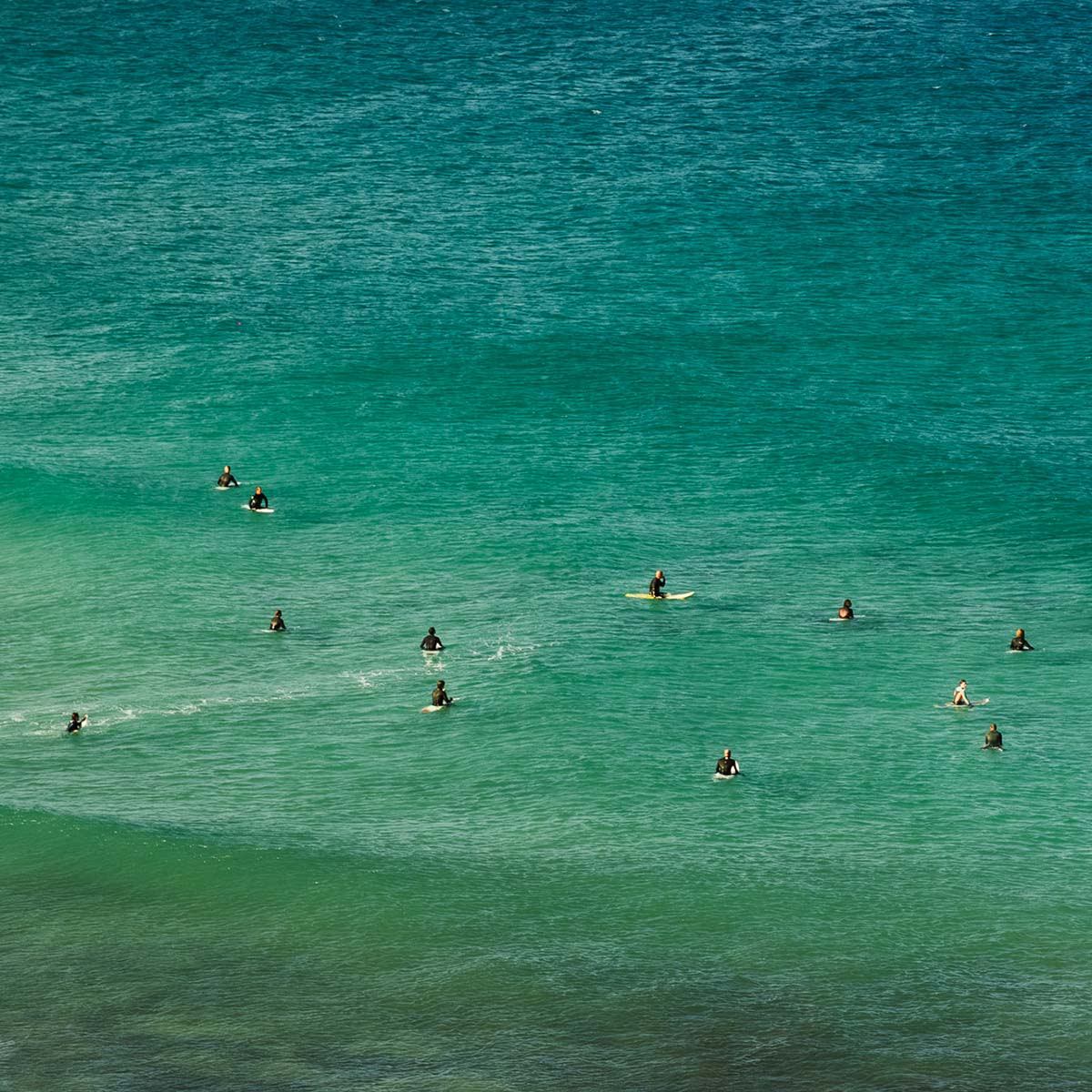
In Fuerteventura, the surf scene is vibrant and full of energy! We highly recommend going out with one of our local guides or coaches to make the most of your surfing experience and ensure you navigate the local conditions safely.
Their expertise will help you get the best out of your surf sessions and ensure you’re well-informed about local customs and surf spots. It’s all about enjoying the waves while respecting the local surf community and making your experience as smooth and enjoyable as possible.
Surfboard recommendations: Which surfboard should I bring to Fuerteventura?
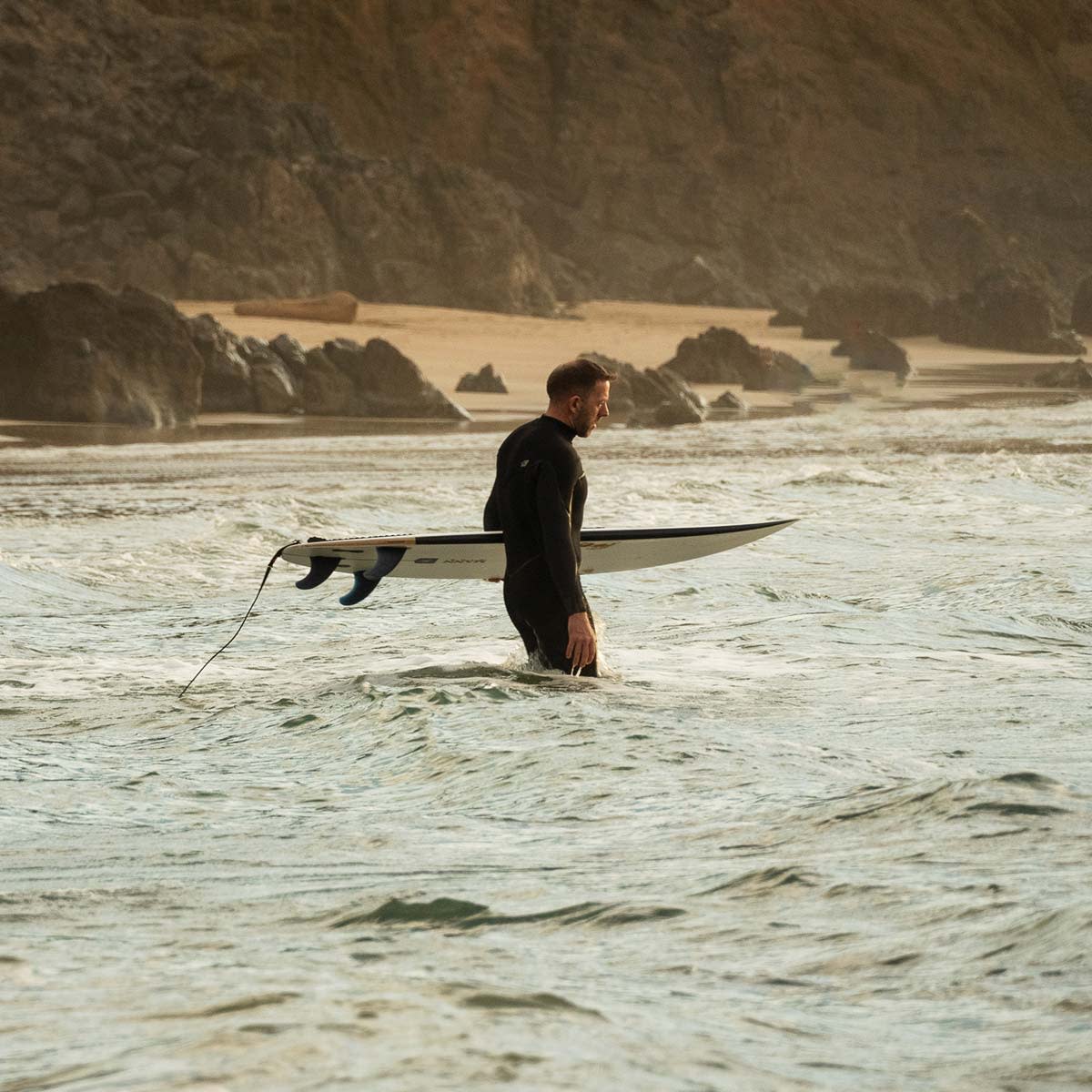
Choosing the right surfboard for Fuerteventura depends on your skill level, the type of waves you want to ride, and the time of year you plan to visit. Here’s a short and handy surfboard guide to help you pick the perfect board for each season:
Seasonal board picks:
Summer: With the smaller and mellower waves, a funboard, longboard, or fish surfboard will serve you well. These boards are ideal for enjoying the easy-going summer swells.
Autumn and Spring: As the waves become more consistent and slightly larger, a shortboard or a versatile hybrid board is a great choice for experienced surfers looking to take advantage of the varied conditions.
Winter: For the bigger and more powerful swells, a step-up board or a gun is recommended. Advanced surfers might also prefer a high-performance shortboard to handle the robust winter breaks.
Beginners: No matter the season, a soft-top surfboard is perfect for newbies. These boards offer stability, safety, and ease of use, making them ideal for learning the basics.
Local weather: Over 300 sunny days yearly
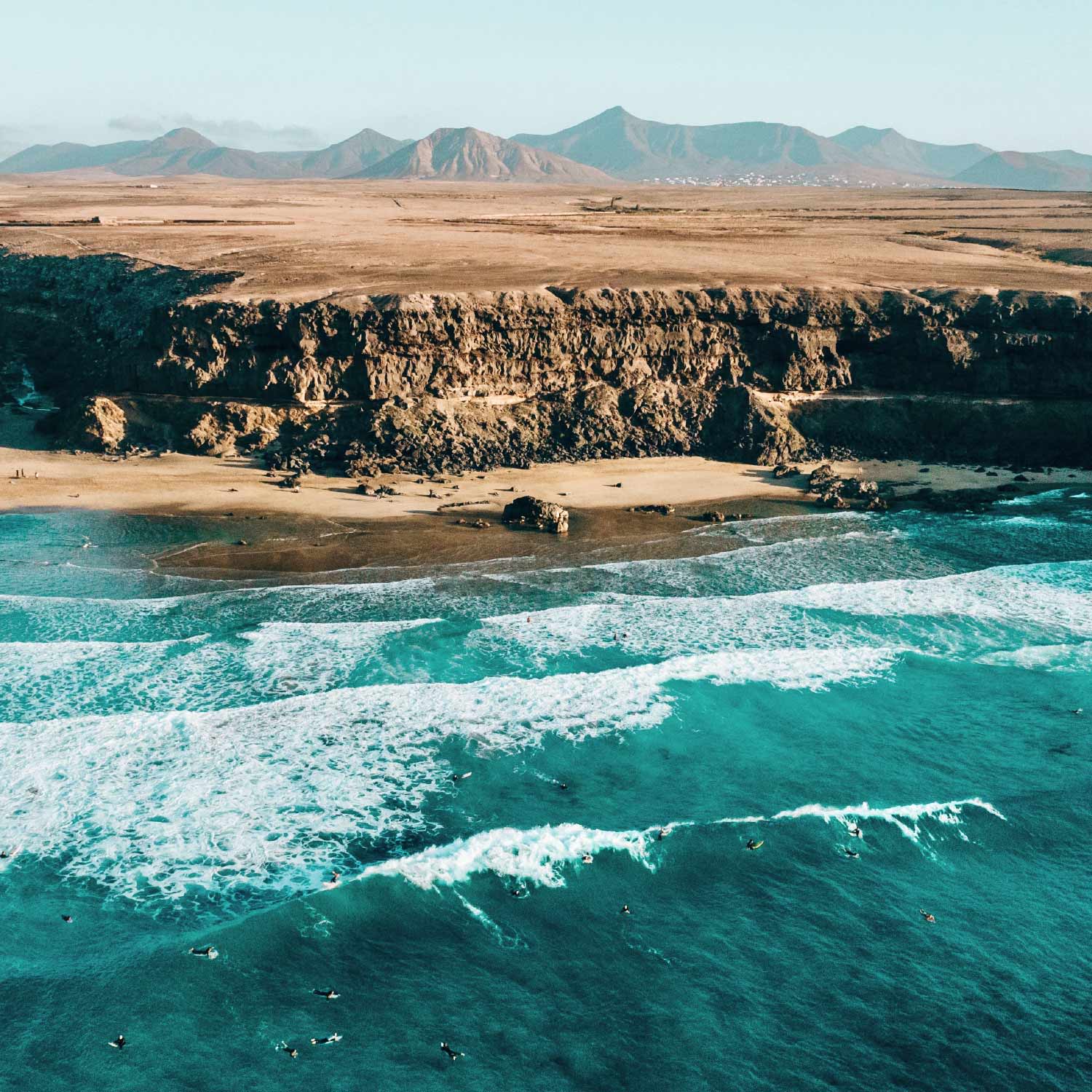
Fuerteventura is known as the island with eternal spring along with the other Canary Islands. With over 300 sunny days a year, you can expect mild winters and warm summers.
Air temperature: Fuerteventura enjoys mild to warm temperatures year-round. Expect daytime highs to range from 20°C to 25°C (68°F to 77°F). The winter months can be a bit cooler, while summer offers a more consistently warm experience.
Water temperature: The water remains pleasantly cool and comfortable for surfing throughout the year. Temperatures typically range from 18°C to 22°C (64°F to 72°F), with the coldest months being from November onwards and the warmest at the end of August/beginning of September.
Regarding wetsuits and swimwear: What should I wear while surfing in Fuerteventura?
Stay comfortable and enjoy your surf sessions in Fuerteventura with the right gear for each season! The weather in Fuerteventura varies throughout the year, so your wetsuit choice will depend on the season:
November to February: Opt for a 4/3mm wetsuit to keep warm in the cooler water and air temperatures. This thickness provides the necessary insulation for winter conditions.
March to June: A 3/2mm wetsuit is ideal as the weather warms up but still maintains a slight chill in the water. This thickness offers a good balance of comfort and protection.
July to October: During the warmer summer months, you can get by with a 2/2mm wetsuit or even just boardshorts, depending on how warm the water feels to you.
Surf safety: What should I be aware of?

Before you hit the waves in Fuerteventura, check out these tips to stay safe and make the most of your session.
Weather conditions: Fuerteventura's weather can be quite windy, especially in the winter months. Be prepared for strong winds and sudden changes in weather that can affect your surf experience.
Water conditions: The waves can be powerful and conditions vary, with strong currents and shallow reefs present at many spots. Always check local surf reports, surf with an instructor and be cautious of the waves' intensity.
Local hazards:
Experienced and advanced surfers: Respect the local surf etiquette and be mindful of experienced surfers in the water. Always ensure you’re in the right spot for your skill level.
Respect other surf schools: There are multiple surf schools in the area; be courteous and avoid interfering with their lessons.
Sea urchins: Watch out for sea urchins in the shallower areas to avoid painful stings.
Dust and sand: The wind can stir up dust and sand, which may affect your visibility and comfort.
Car theft: Be mindful of your belongings as car theft can be a concern. Always lock your car and keep valuables out of sight.
Travel time: It takes about 20 minutes to get to most surf spots from our camp.
A final note on surfing in Fuerteventura: The European island dream life
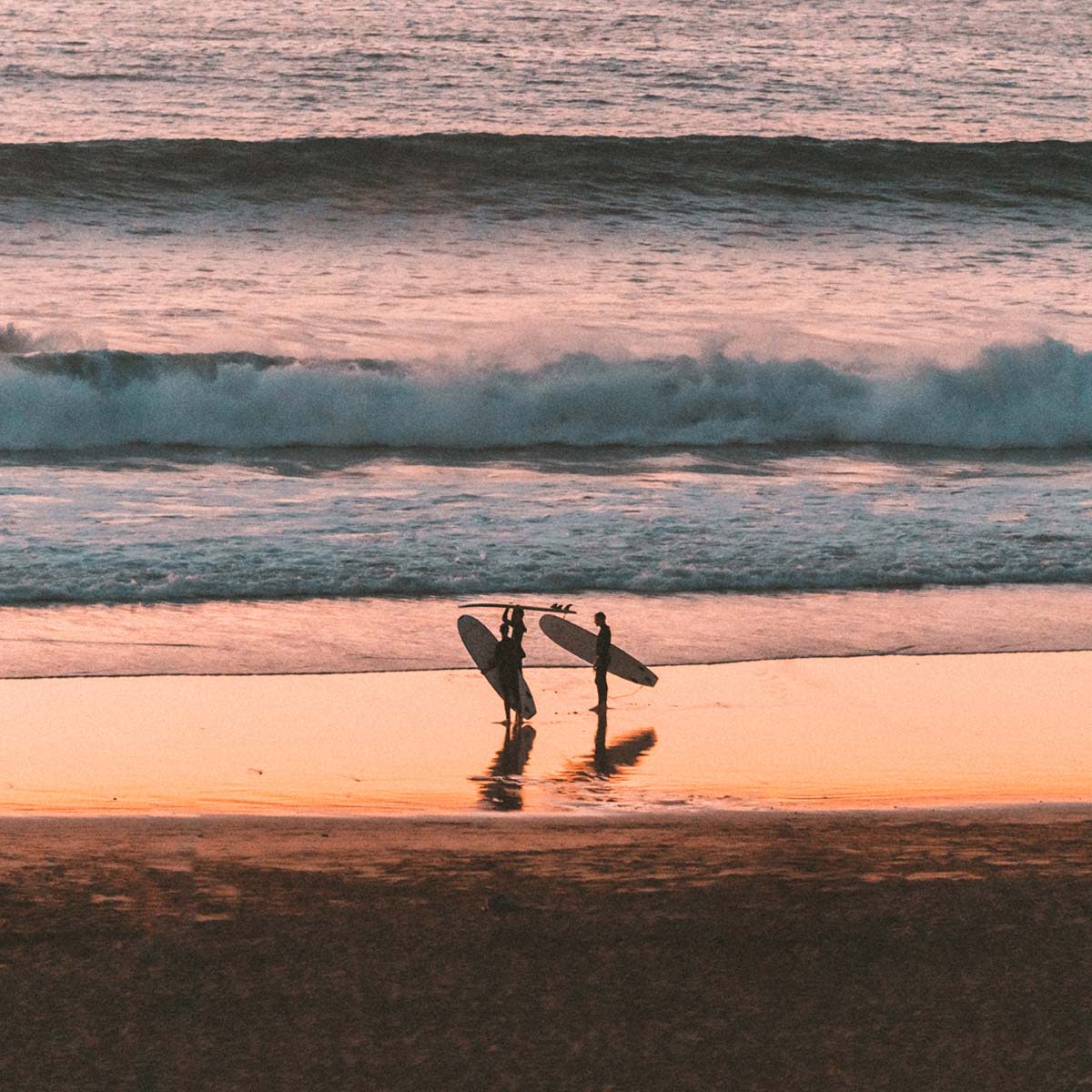
Fuerteventura is home to some of the most breathtaking point breaks and reef breaks you’ll ever encounter. With offshore winds for most of the year, the conditions are often ideal for an epic surf session. The warm weather offers a pleasant escape, especially during the European winter months. Enjoy the incredible surf scene in this stunning Canary Island paradise!
Lapoint Surf Camp: Our home in Fuerteventura

Our surf camp is located in a small surf town called Lajares. Everything you’ll need is within walking distance from the camp, like the cafés, supermarkets and surf shops. Lajares is full of life and has a bit of everything!
Transportation: How do I get around in Fuerteventura?
Arriving and departing to and from the surf camp
You’ll get picked up from the airport with Lapoint’s shuttle and the ride to the camp takes about 30 minutes. The shuttle drives along the coastline so get ready for some amazing views on your way to the camp.
Getting around in Fuerteventura
Renting a car during your stay in Fuerteventura is a good idea to get around and explore the island. There are plenty of car rentals around and it won’t be too expensive if you rent together with a friend or a group!
If renting a car isn't in your plans then don’t worry, you will be fine without a car too! If you want to see the nearby towns, Cotillo and Corralejo, there will be buses going there a few times a day. There are also taxi services available.
Delicious local food: What to eat in Fuerteventura?
Don’t miss out on the traditional cuisine when visiting Fuerteventura. Fish is one of the most popular foods on the island thanks to Fuerteventura’s close connection to the ocean. Here’s our list of some of our favorite foods from the Fuerteventura and the Canary Islands.
Traditional Canary Island food
Gofio Escaldado: A must-try when visiting the Canary Islands is Gofio Escaldado. Gofio is a kind of flour from the Canaris. The Gofio Escaldado can be served as an appetizer and you’ll get chopped onion pieces with it to use as spoons. Is on the list of foods with a protected designation of origin by the European Commission.
Papas Arrugadas: A boiled potato dish that usually is served with a mojo (which means sauce). Mojo originates from the Canary Islands and comes in three main variations. You can eat the dish with mojo verde (green mojo), mojo rojo (red mojo) and mojo picón (red mojo with extra spice).
Majorero cheese: A cheese with a nutty and milky flavor from Fuerteventura.
Goat meat: Goat stew is a famous dish in Fuerteventura.
What to do when you’re not surfing: Activities and adventures
There are many things to explore around Fuerteventura during the days when you're not surfing. We recommend you hike up the Calderón Hondo volcano. You’ll see a gorgeous view from the top overlooking the crater and the island’s landscape.
It’s the perfect place to watch the sunset over the ocean. Camels are a part of Fuerteventura's identity and seeing the beautiful island from the back of a camel is a really cool experience. Here are some other fun things to do around:
Visit the sand dunes
Spend a sunny day on a catamaran
Go diving and explore the life underwater
Swim in the natural rock pools
Take up surfskating at the camp
Packing list: Fuerte fun(-damentals)
Here’s your packing guide for what you need for your Fuerteventura holiday:
Passport: Required for travel to Spain, even though Fuerteventura is in the Canary Islands.
Travel insurance: Make sure it includes surf coverage for peace of mind during your trip.
Swimwear and wetsuit: The water is cooler than tropical destinations, so pack a wetsuit (a 3/2mm works year-round) or borrow one at the camp.
Beach towel: Bath towels are provided, but bring your own for sandy beach adventures.
Sunscreen: A reef-safe, high-SPF sunscreen is a must under the Canary Islands’ bright sun.
Reusable water bottle: Stay hydrated while being eco-conscious!
Cash and card: Euros are the currency, and cards are widely accepted, but some smaller places prefer cash.
Surf hat and sunglasses: Protect yourself from the sun both in and out of the water.
Surfboard: Our camp has plenty of options, but if you have a favorite board, bring it along.
Adapter: Spain uses type C and F plugs, so pack an adapter if needed.
A camera: Fuerteventura's unique landscapes are well worth capturing!
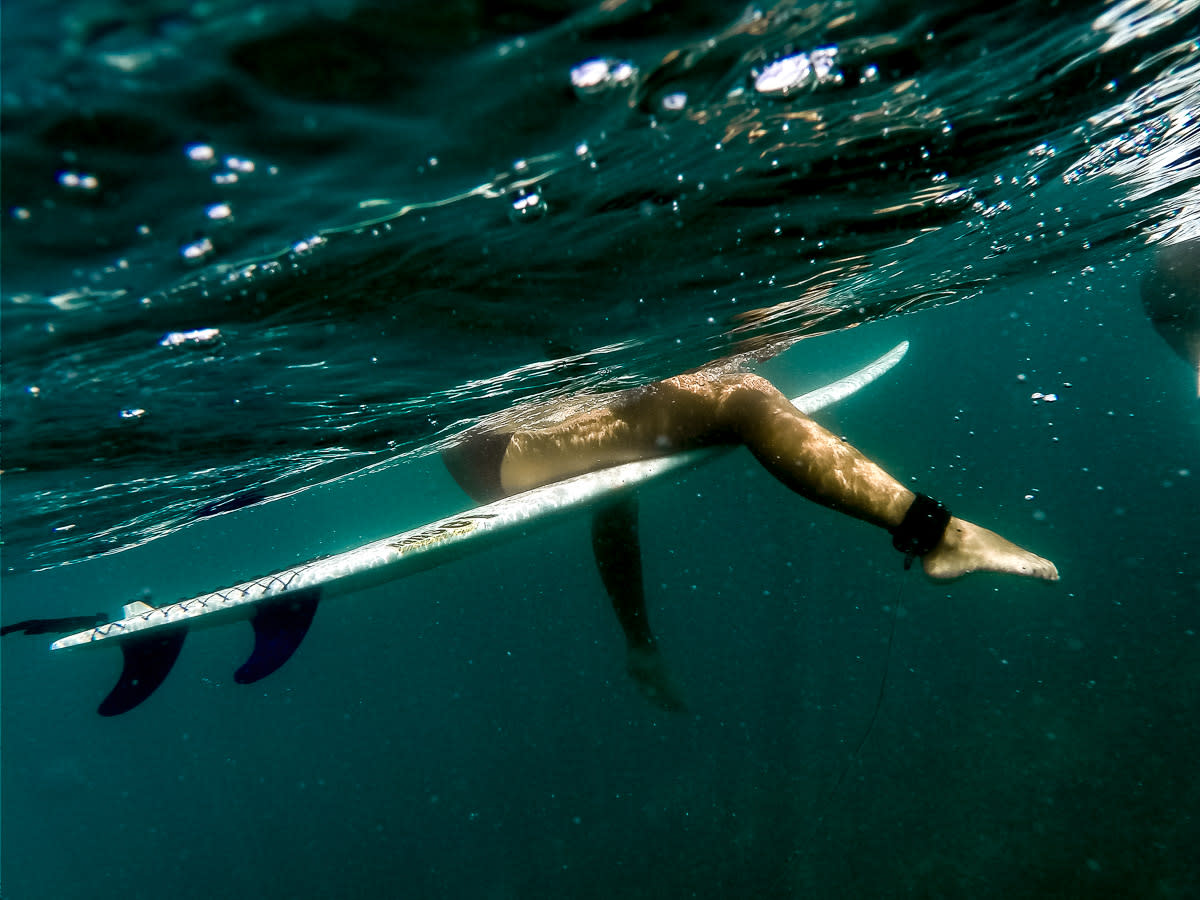
Sustainability
The beach is our home. We are leaving it better than we found it.
We have made a commitment to our ocean, beaches and community. They are our playground, our home and our livelihood. We are going to leave them better than we found them. That means that all our employees, friends and guests helps out with recycling and taking other actions for the environment. Each week there are beach cleaning and recycling activities to ensure that our home stays the way it was supposed to be.
Lapoint